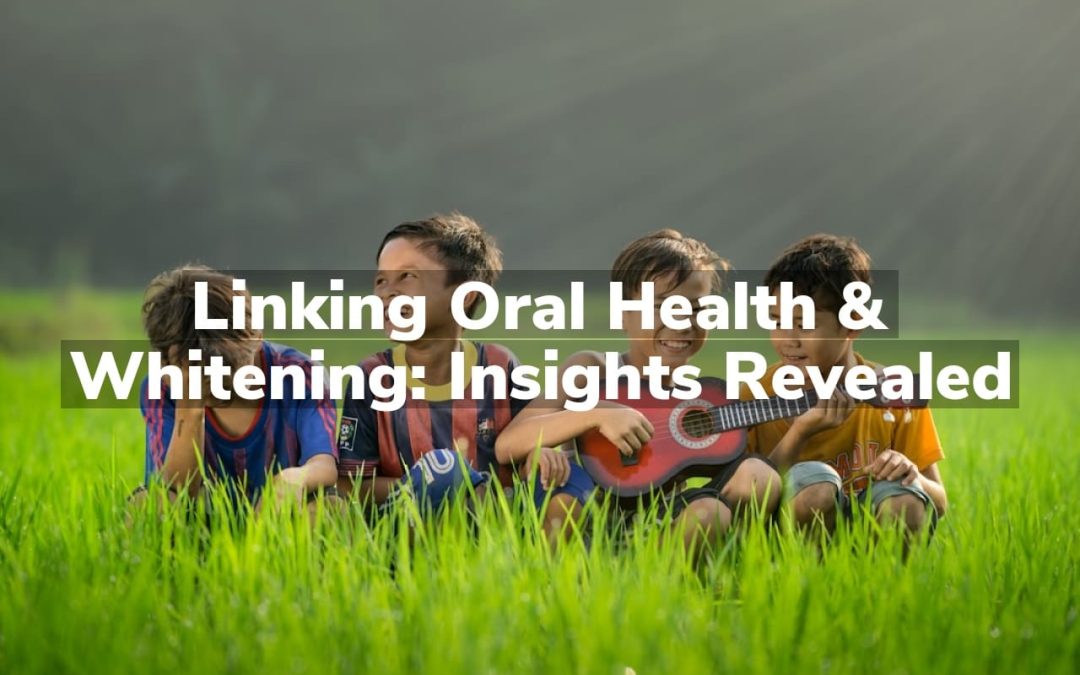Have you ever wondered how the pursuit of a brighter smile is connected to your overall oral health? Recent insights reveal that the journey to achieving whiter teeth is intricately linked with maintaining good oral hygiene practices and understanding the health of your mouth. This exploration sheds light on the complex relationship between aesthetic dental goals and foundational oral health.
Understanding Oral Health Basics
Oral health is a critical aspect of overall well-being, encompassing the maintenance of healthy teeth, gums, and mouth. It’s essential to recognize that oral health is not just about avoiding cavities and gum disease; it also plays a significant role in ensuring our ability to smile, speak, and eat comfortably. The foundation of good oral health lies in regular dental check-ups and adhering to daily hygiene practices. However, the pursuit of a brighter smile has led many to explore the realm of teeth whitening.
The connection between oral health and teeth whitening is intricate. While the desire for whiter teeth is understandable, it’s important to approach this goal with an awareness of oral health fundamentals. Whitening treatments, whether conducted professionally or through over-the-counter products, should be considered with a comprehensive understanding of one’s oral health status. For those interested in exploring the various methods available for teeth whitening, Diverse Approaches to Teeth Whitening Uncovered offers insightful perspectives on the subject. This exploration can provide valuable context for individuals looking to enhance their smile while maintaining oral health integrity.
The Science Behind Teeth Whitening
Teeth whitening is a fascinating process that revolves around the principle of removing or altering the color of the stains on the teeth to make them appear whiter. At its core, the science behind teeth whitening involves the application of certain substances that interact with the discolored molecules in the tooth enamel. These interactions either break down the stains into smaller, less colored components or create a chemical reaction that lifts the stains from the enamel, allowing the natural whiteness of the teeth to shine through more prominently. This process is carefully controlled to ensure it is safe and effective, aiming to enhance the aesthetic appearance of teeth without damaging their structure or health.
Understanding the intricacies of how teeth whitening works can be quite complex, but it essentially boils down to a sophisticated chemical reaction that targets and modifies the coloration of teeth. It’s a testament to the advancements in dental science and technology, offering individuals an option to brighten their smiles under professional guidance. For those interested in exploring professional teeth whitening services, Crown Point Teeth Whitening Services provide a comprehensive approach to achieving a brighter smile with the expertise of skilled dental professionals.
Common Causes of Tooth Discoloration
Tooth discoloration is a prevalent concern that can affect anyone, stemming from a variety of factors. These include the consumption of certain foods and beverages like coffee, tea, and red wine, which are known for their strong color pigments called chromogens that attach to the white, outer part of your tooth. Additionally, tobacco use, whether smoking or chewing, introduces substances such as tar and nicotine that can cause significant staining. Aging also plays a role, as over time, the outer enamel layer gets thinner with brushing, revealing the yellowish color of the dentin beneath. Furthermore, trauma to the teeth can disrupt enamel formation in young children whose teeth are still developing, or cause discoloration in adults due to damage to the nerve or blood vessels. Lastly, certain medications are known to have side effects that include tooth discoloration, highlighting the complexity of factors that can impact the appearance of one’s teeth.
Impact of Diet on Tooth Color
The foods and beverages we consume play a significant role in determining the color of our teeth. Certain items, especially those with intense color pigments like coffee, tea, red wine, and some fruits and vegetables, can lead to staining over time. These pigments attach to the enamel, the outermost layer of the tooth, causing discoloration. While the natural aging process also affects tooth color, dietary choices are among the primary external factors influencing how bright or stained our teeth appear. Understanding this connection highlights the importance of considering our diet’s impact on oral health and aesthetics. For those seeking comprehensive dental care, including concerns about tooth color, a Crown Point Dentist can provide professional guidance and solutions.
Professional Consultation Importance
When considering the connection between oral health and achieving a brighter smile, the significance of seeking a professional consultation cannot be overstated. Engaging with dental professionals provides an opportunity for individuals to understand their unique oral health status and the potential impact it may have on their whitening goals. This approach ensures that any decisions made are informed by expert insights, prioritizing not only the aesthetic aspects of dental care but also the foundational health of one’s teeth and gums.
Conclusion
For more insights, call us at 219-663-1207 or read our reviews on Google Maps.

